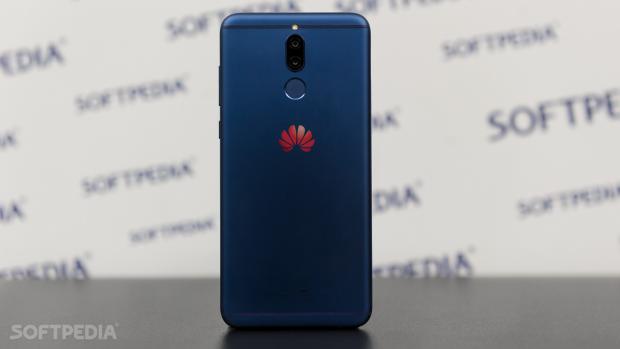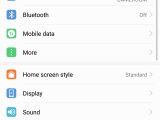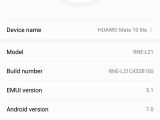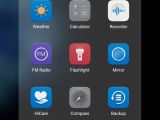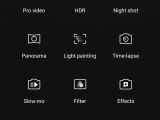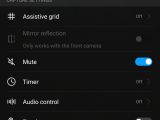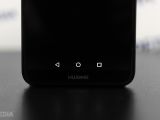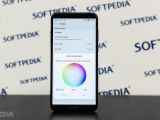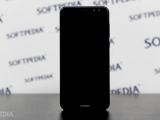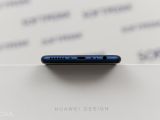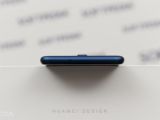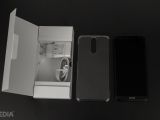If you’ve been following technology news lately, you probably noticed that Huawei doesn’t miss any occasion to declare war to Apple because for some reason, the Chinese firm wants to prove that its devices are much better than an iPhone.
And while this is a little surprising since Samsung is actually the number one phone maker right now, it’s not a secret that Apple is the brand that gains more attention, so it’s easy to make the news just by picking on the iPhone father.
As a result, every time I got the chance to try out a Huawei device in the last couple of years I expected nothing but the best the company had to offer. Needless to say, it happened several times to be disappointed, even in the case of flagships.
This time, I’m playing the safe card and not getting my hopes too high with the mid-range Huawei Mate 10 Lite, though things like edge-to-edge screen and four cameras can certainly have the potential to get me and other people excited.
First and foremost, let me tell you one thing from the very beginning: I’m still not a big fan of Huawei's packaging because the way one needs to turn the box upside down to pull out the phone isn’t only absurd, but it also creates additional risk of dropping the device to the ground.
If we are to compare this with Apple's (although this would be a little unfair since it’s a mid-range phone we’re talking about here) it's worth mentioning that Cupertino itself has made subtle tweaks to its iPhone packaging with the iPhone 7 after several customers smashed their phones to the ground when opening the box. If the phone was previously the first thing you saw when unboxing the iPhone for the first time, there’s now a new label that reads “Designed by Apple in California” and placed on top of the device to prevent accidents.
Leaving this aside, the way the Huawei Mate 10 Lite feels in hand is a pretty surprising experience. While the back of the device reminded me of the Xiaomi Mi Note 4, especially in blue version, the front feels just as modern as on more expensive devices. The edge-to-edge display is what makes the whole thing special, with very small bezels at the top and the bottom to serve as the home of front-facing parts like camera, speaker, and microphones.
In addition to the premium feeling that it offers, the Mate 10 Lite is also pretty easy to carry around, as it tips the scales at just 164 grams, including the battery. This means it’s lighter than the iPhone 8 Plus (202 grams) and the Samsung Galaxy S8+ (173 grams), despite having a bigger screen than the first, though smaller than the latter.
“Feels great in hand.”
At 72.5 x 156.2 x 7.5 mm and screen-to-body ratio of 83 percent, the Chinese firm has clearly managed to do a pretty good job in terms of design, even though there’s still room for improvements to reach other edge-to-edge phones like the Galaxy S8+.
For example, it does better than the iPhone 8 Plus (67.4%), but worse than the Galaxy S8+ (84%) which also has a bigger 6.2-inch display.
Huawei’s obsession for everything Apple can be noticed from the second you see the box the first time. With an imposing “Huawei Design” text on the side of the box, the Chinese manufacturer appears to follow Apple’s “Designed by Apple in California” punch line, though as I said already, there are substantial differences in terms of packaging.
There are Apple design cues on the phone itself as well, with the bottom clearly resembling the one of older iPhone models, like the 6s Plus, with one big speaker grille, a charging port (micro USB on the Huawei) in the middle, and headphone jack on the side.
There are two things I don’t like in terms of design. First, it’s the Huawei logo on the front side. I still can’t get it why Huawei doesn’t rely more on the company’s logo, which could look substantially better than the full name on the phone. And second, the black antenna lines on the blue body are plain ugly, and this is actually one of the areas where Huawei should copy the design from Apple and either move them to the top and bottom edges or find a different way to get rid of them.
Huawei Mate 10 Lite is by no means supposed to be a power horse, though to be completely honest, after using it for nearly two weeks I started to think that it’s not far either. Its hardware certainly doesn’t recommend it as a rival to high-end devices, but it does its job surprisingly well.
First of all, there’s the IPS display, which measures 5.9 inches and has a resolution of 1080x2160 pixels with 407 PPI. Huawei says nothing about the level of protection, but I assume it uses at least Gorilla Glass 3 or an equivalent technology because it resisted the typical scratches that phones get when carrying them in the same pocket with the keys. The metal body is also a big plus as compared to glass, and this is actually one of the reasons I like old iPhone models more than the new ones unveiled this year.
Huawei equipped this mid-range model with a mid-range processor that competes against Qualcomm’s mid-range Snapdragon series. It’s the in-house Kirin 659 processor that powers the Mate 10 Lite in an octa-core configuration as it follows: 4 x Cortex-A53 2.36GHz + 4 x Cortex-A53 1.7GHz.
The chip is paired with 4GB RAM and 64GB storage, with another 128GB available via microSD card support.
“Mid-range hardware specs.”
At first glance, this hardware configuration certainly leaves a lot to be desired, but it’s not that bad actually. The device doesn’t feel slow unless you launch a super-demanding game, and for the typical activities that we do every day, it’s more than enough. The one place where it shows its limit and where it’d really need a boost is camera performance.
Huawei turned to one pretty unusual way to catch everyone’s attention with this device. The Mate 10 Lite comes not with one camera, not with two, not with three, but with four different cameras, two on the front and two on the rear. And while this sounds awesome on paper, it’s not as impressive in real life.
First and foremost, the specs. The front camera is a combination of a 13-megapixel and 2-megapixel units, while the rear is 16-megapixel + 2-megapixel. Why the need for a secondary camera? As compared to Apple, which added an additional telephoto lens for analog zoom, the Mate 10 Lite uses the secondary camera for the in-depth effect that photos get when shooting photos in portrait mode.
The blur effect which some phones apply using software tricks is generated by the secondary lens on this Huawei smartphone, and the result, again on paper, should be substantially better. In reality, however, it’s not as good.
Truth be told, the Mate 10 Lite shoots photos that are clearly above the average when the perfect light conditions are available. Vivid colors, good colors and contrast, but just average detail quality can be noticed in almost every shot. The portrait mode, which can be quickly turned on with a toggle in the camera UI, indeed adds a nice in-depth effect, though some optimizations are needed here as well because sometimes the blur covers big parts of the subject.
In low-light conditions, performance of the Mate 10 Lite camera goes downhill. Noise becomes incredibly annoying, while colors are getting more washed out as the environment goes darker. Depending on the light, the phone can completely mess up colors, as it's the case in the shot with the pineapple below where everything is yellow.
The four-camera configuration certainly doesn’t do any wonders, even though you’d expect otherwise. The in-depth effect is unquestionably a nice touch, but it’s odd to have a secondary camera just for that, especially because this visual effect doesn’t make sense in all photos we take.
I said earlier that camera performance is where the hardware shows its limits. One of the areas where some optimizations would be more than welcome is photo processing, as sometimes portraits need at least a couple of seconds to be processed in the background until you get to see your shot. This is because in addition to the secondary camera, the Mate 10 Lite also uses software power to apply the blur effect, and because of the limited CPU capabilities, it needs plenty of time to do it.



The device lacks NFC support, which is a bummer given that payment systems are becoming more popular these days, and comes with Bluetooth 4.2 and Wi-Fi 802.11 b/g/n 2.4GHz.
As far as battery goes, it’s equipped with a 3340 mAh unit which according to Huawei should take around 150 minutes to charge (2 hours and a half) and offer up to 20 hours of talk time. Truth be told, the device does take more than 2 hours to charge given that it lacks full charge support and features a micro USB port with USB 2.0, while battery life stands at approximately 30 hours with mixed usage.
This involves browsing the web for around two hours, half an hour of talking, one hour of watching videos on YouTube, and the typical texting that we do every day. This is pretty good performance, though recharging the device is a rather painful process and unless you do it during the night, it’s getting increasingly frustrating.
“Fingerprint sensor. Check!”
One thing that Huawei hasn’t copied from Apple is its new focus on facial recognition systems, and I’m more than happy with this. The fingerprint sensor still has a place on Huawei’s model, and I like it this way, especially because it works pretty fast with scanning errors rarely occurring when the finger is wet or things like that. Placed in a very natural position on the back of the phone, unlike on the Samsung Galaxy S8 that is, the fingerprint sensor feels like a feature that has been there forever, and I really think many people are going to miss it once more manufacturers start giving up on it.
Huawei Mate 10 comes with EMUI 5.1 based on Android 7.0, and before digging deeper into what this means in terms of software, let me tell you I’m a little disappointed the device didn’t launch with Android 8.0 Oreo out of the box. Google started shipping the final build of Oreo to production devices in the second half of August, while the Mate 10 Lite was announced in October, so Huawei could have tested the beta builds and prepare it for its device as well.
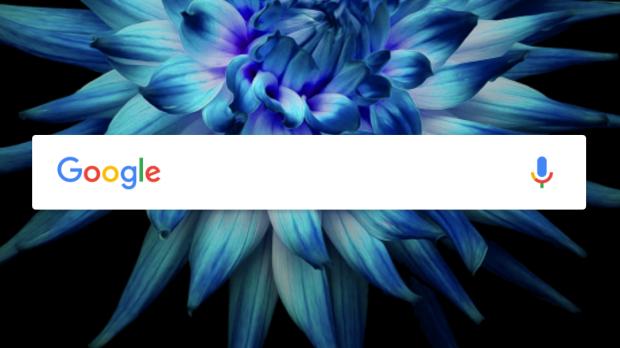


While Android 7.0 Nougat isn’t the worst choice either, there’s still no word right now on whether an update to Oreo is planned and, more importantly, when it could land.
EMUI 5 isn’t the latest version, as EMUI 8 based on Android 8 Oreo has already been announced, but again, this makes sense since the most recent Android release hasn’t shipped to this device.
As far as the EMUI experience is concerned, there are pros and cons in this regard. There are people who absolutely love it and find it the most user-friendly Android version ever, but there are also some others who just hate it and would gladly install a launcher or go for the raw Android experience.
While I’m part of the latter category, I do admit that EMUI can come in handy to those who just want a user-friendly interface and straightforward options, though for someone who comes from outside the Huawei ecosystem, it could take some time to get used to it. There are options that are simply called differently because Huawei thought it’d be better this way, as it’s the case of the night light, which some people call blue light filter or night shift, but which the Mate 10 Lite offers as Eye Comfort.
On the good side, EMUI 5 has goodies that you’d otherwise only get by rooting an Android device, and it’s great that Huawei has spent some time to determine the more popular tweaks that users would need by default in their operating system.
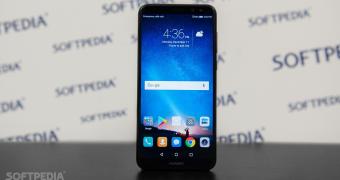
 14 DAY TRIAL //
14 DAY TRIAL // 
